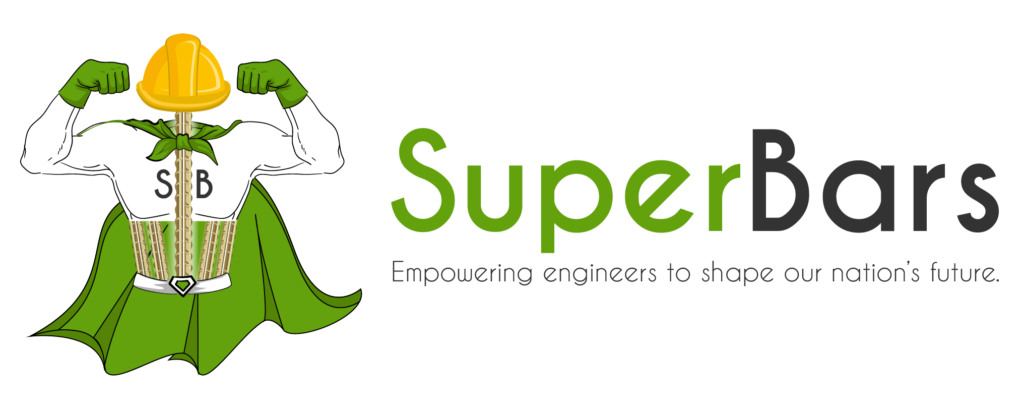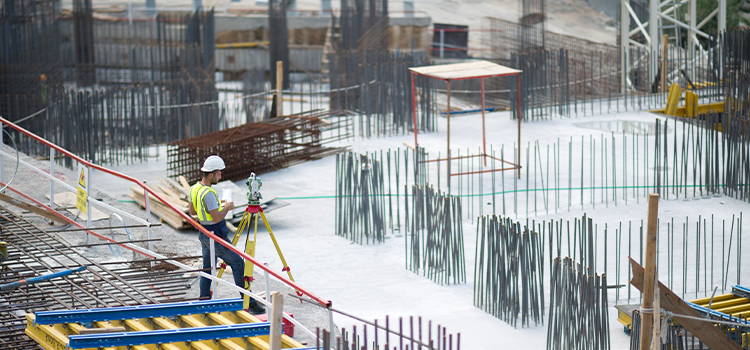For many years, steel has been the primary material used in the construction industry for reinforcement of concrete structures. However, with the advent of glass fiber reinforced polymer (GFRP) bars, there has been a growing interest in exploring their potential as an alternative to traditional steel bars. In this blog post, we will explore the reasons why GFRP bars should replace traditional steel bars in construction projects.
- Corrosion Resistance
Corrosion is a major concern for steel reinforcement in concrete structures, especially in harsh environments where the steel is exposed to moisture, saltwater, and other corrosive elements. The corrosion process can lead to the formation of rust on the surface of the steel, which weakens the material and reduces its load-bearing capacity. In severe cases, corrosion can cause structural failure, which can be catastrophic and result in costly repairs or even loss of life.
In contrast, GFRP bars are not susceptible to corrosion. This is because they are made of a composite material that does not contain metal, and therefore cannot rust or corrode. Instead, GFRP bars are typically made of a combination of glass fibers and a polymer resin, which provides the necessary strength and durability for use as reinforcement in concrete structures.
The corrosion resistance of GFRP bars has several advantages in construction applications. First and foremost, it increases the service life of the structure, as there is no need for costly repairs or maintenance due to corrosion damage. This can result in significant cost savings over the life of the structure.
In addition, the corrosion resistance of GFRP bars also makes them ideal for use in harsh environments, such as coastal areas or industrial sites. In these environments, steel reinforcement is particularly susceptible to corrosion, which can compromise the safety and longevity of the structure. By using GFRP bars instead of steel, the structure can be designed and constructed to withstand these harsh conditions without compromising its durability or service life.
Another advantage of the corrosion resistance of GFRP bars is that it allows for greater design flexibility. In structures that require steel reinforcement, designers must often include additional concrete cover to protect the steel from corrosion. This can result in thicker, heavier concrete sections and increased construction costs. With GFRP bars, however, there is no need for additional cover, which can allow for thinner, lighter sections and more efficient use of materials.
- Lightweight
The weight of reinforcement bars is an important consideration in the design and construction of concrete structures. Traditional steel bars are heavy, which can make them difficult and time-consuming to handle and transport. In addition, the weight of steel reinforcement can add significant weight to the overall structure, which can be a concern in seismic zones where the weight of the structure can affect its ability to resist earthquakes.
In contrast, GFRP bars are significantly lighter than traditional steel bars. This is because the composite material used to make GFRP bars is much less dense than steel, which results in a much lighter weight. The lightweight nature of GFRP bars has several advantages in construction applications.
First, the lighter weight of GFRP bars makes them easier to handle and transport. This can lead to cost savings in terms of labour and equipment required for installation. For example, a smaller crane may be sufficient to lift and place GFRP bars, which can reduce the cost of renting or purchasing heavy equipment. In addition, the lighter weight of GFRP bars can also reduce the risk of injury to workers during installation.
Second, the lightweight nature of GFRP bars can also reduce the overall weight of the structure. This can be especially beneficial in seismic zones, where the weight of the structure can affect its ability to resist earthquakes. By using GFRP bars instead of steel, the overall weight of the structure can be reduced, which can improve its seismic performance. This is because lighter structures are less likely to experience significant damage during an earthquake.
Third, the lighter weight of GFRP bars can also have a positive impact on the construction schedule. Because GFRP bars are easier to handle and transport, they can be installed more quickly than traditional steel bars. This can help to speed up the overall construction schedule, which can be beneficial in projects with tight timelines.
The significant weight savings offered by GFRP bars compared to traditional steel bars have several advantages in construction applications. They make them easier to handle and transport, which can lead to cost savings and reduce the risk of injury to workers. The lightweight nature of GFRP bars can also reduce the overall weight of the structure, which can be beneficial in seismic zones. Finally, the lighter weight of GFRP bars can also help to speed up the construction schedule, which can be beneficial in projects with tight timelines.
- High Strength
While GFRP bars are significantly lighter than traditional steel bars, they are also incredibly strong. In fact, the tensile strength of GFRP bars is comparable to that of steel. Tensile strength is a measure of the maximum stress that a material can withstand before it fails under tension.
The high strength of GFRP bars makes them suitable for a wide variety of applications where high strength is required. For example, GFRP bars can be used as reinforcement in bridge decks, parking garages, and industrial floors. In these applications, the strength of the reinforcement is critical to ensure the structural integrity and safety of the building or infrastructure.
One advantage of using GFRP bars in these applications is that they offer a high strength-to-weight ratio. This means that GFRP bars can provide the same level of strength as steel reinforcement, while being much lighter. This can be particularly beneficial in applications where the weight of the structure is a concern, such as in bridge decks.
Another advantage of GFRP bars is their resistance to fatigue. Fatigue is a phenomenon where a material can fail after repeated loading and unloading cycles. In structures subjected to cyclic loading, such as bridges and parking garages, fatigue can be a major concern. GFRP bars have been shown to have excellent fatigue resistance, which can extend the service life of the structure.
- Non-Magnetic
The non-magnetic property of GFRP bars is due to the absence of iron, which is a magnetic material found in steel. This property of GFRP bars is particularly useful in applications where the presence of magnetic materials can cause issues. For example, in laboratories or research facilities where sensitive equipment is used, magnetic materials can interfere with the accuracy of measurements. The use of non-magnetic GFRP bars can help to mitigate these issues.
Moreover, non-magnetic GFRP bars can also be beneficial in areas where traditional steel reinforcement would be subject to magnetic interference, such as in MRI rooms in hospitals. The strong magnetic fields generated by MRI machines can affect the performance of steel reinforcement, leading to image distortions and other issues. By using non-magnetic GFRP bars in these areas, the risks of such magnetic interference can be minimised.
.
- Non-Conductive
As mentioned earlier, GFRP bars are non-conductive, meaning they do not conduct electricity. This is because GFRP is an insulating material and does not contain any conductive metals such as steel. This property of GFRP bars can be particularly useful in applications where electrical conductivity could pose a safety hazard, such as in high-voltage power lines or communication towers.
In power transmission and distribution systems, high-voltage power lines are used to transmit electricity over long distances. The use of conductive materials such as steel reinforcement in these structures could pose a safety risk to workers in the event of an electrical discharge or lightning strike. GFRP bars, on the other hand, are non-conductive and can help to mitigate these risks.
Similarly, communication towers are often located in areas with high levels of electromagnetic radiation. The use of conductive materials in these structures could interfere with the performance of the communication equipment. By using non-conductive GFRP bars, the risks of electromagnetic interference can be minimised, ensuring that the communication equipment performs optimally.
Moreover, the non-conductive property of GFRP bars can also be useful in structures such as bridges or buildings where electrical conductivity could pose a safety hazard to the occupants. For example, in the event of a lightning strike, the use of conductive materials in the structure could increase the risk of electrical shock or fire. By using non-conductive GFRP bars, the risk of electrical conductivity can be minimised, ensuring the safety of the occupants.
- Design Flexibility
In terms of installation, the ease of cutting and bending GFRP bars can also help to reduce installation time and costs. Traditional steel bars require specialised equipment and expertise to cut and shape on site, which can add time and cost to the construction process. In contrast, GFRP bars can be cut to length using standard cutting tools, and can be bent to a much tighter radius without compromising their strength.
Moreover, the ability to manufacture GFRP bars in a variety of colours can be particularly useful for design purposes or to help with identification on the construction site. This can help architects and engineers to integrate the reinforcement into the overall design of the structure, or to help contractors easily identify different reinforcement types during installation. Additionally, the use of coloured GFRP bars can help to improve the aesthetics of the finished structure, particularly in applications where the reinforcement is visible.
- Environmental Benefits
Finally, GFRP bars offer a number of environmental benefits over traditional steel bars. They are made from non-toxic materials, and are recyclable at the end of their useful life. In addition, the production of GFRP bars requires significantly less energy than the production of steel bars, which can help to reduce the carbon footprint of construction projects.
In summary, the benefits of replacing traditional steel bars with GFRP bars are numerous. They offer superior corrosion resistance, high strength, design flexibility, and environmental benefits. In addition, their lightweight, non-magnetic, and non-conductive properties make them ideal for a wide range of applications. With these advantages, it’s no wonder that many construction professionals are turning to GFRP bars as a viable alternative to traditional steel bars.








